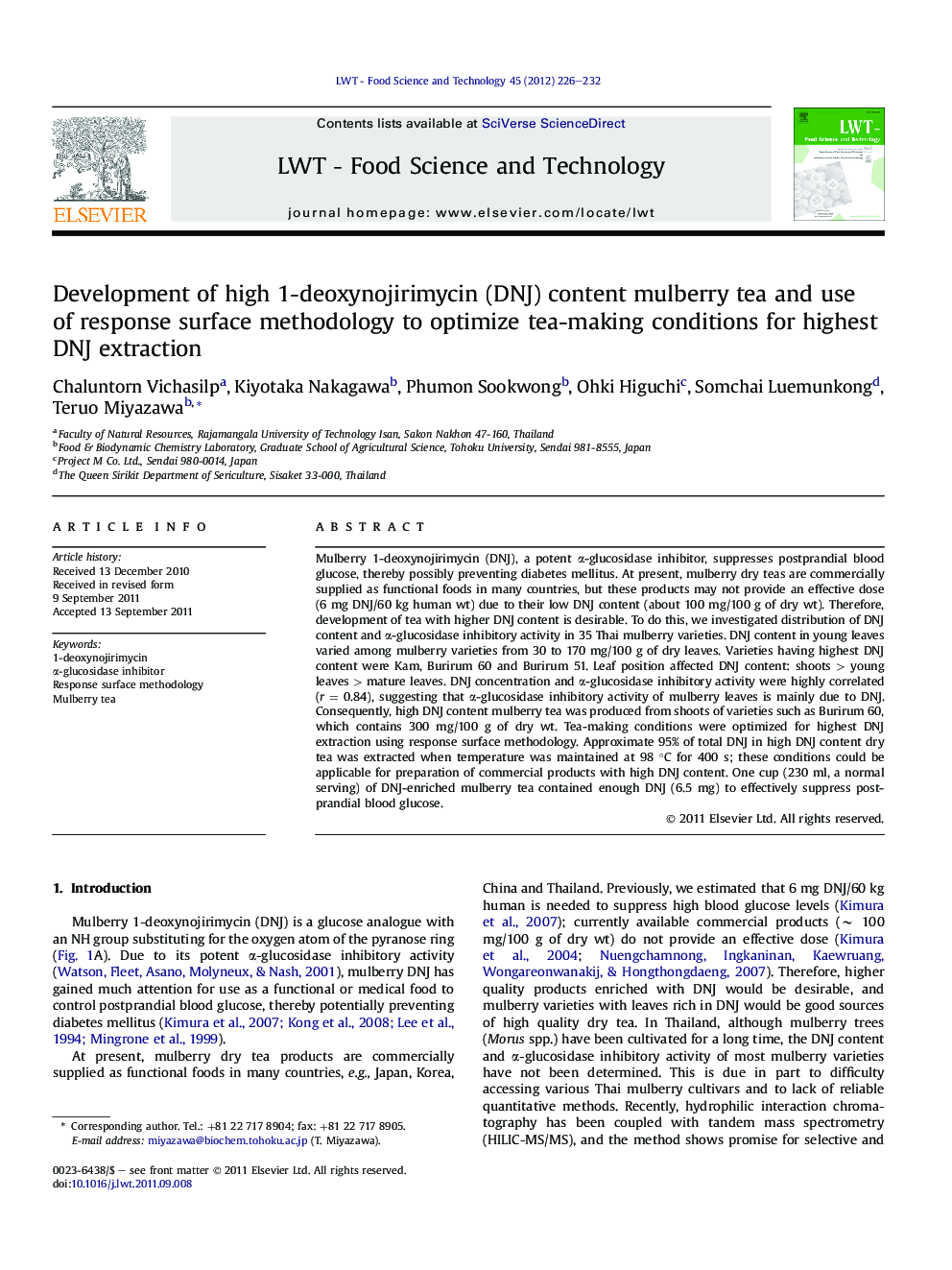| کد مقاله | کد نشریه | سال انتشار | مقاله انگلیسی | نسخه تمام متن |
|---|---|---|---|---|
| 6405653 | 1330920 | 2012 | 7 صفحه PDF | دانلود رایگان |

Mulberry 1-deoxynojirimycin (DNJ), a potent α-glucosidase inhibitor, suppresses postprandial blood glucose, thereby possibly preventing diabetes mellitus. At present, mulberry dry teas are commercially supplied as functional foods in many countries, but these products may not provide an effective dose (6 mg DNJ/60 kg human wt) due to their low DNJ content (about 100 mg/100 g of dry wt). Therefore, development of tea with higher DNJ content is desirable. To do this, we investigated distribution of DNJ content and α-glucosidase inhibitory activity in 35 Thai mulberry varieties. DNJ content in young leaves varied among mulberry varieties from 30 to 170 mg/100 g of dry leaves. Varieties having highest DNJ content were Kam, Burirum 60 and Burirum 51. Leaf position affected DNJ content: shoots > young leaves > mature leaves. DNJ concentration and α-glucosidase inhibitory activity were highly correlated (r = 0.84), suggesting that α-glucosidase inhibitory activity of mulberry leaves is mainly due to DNJ. Consequently, high DNJ content mulberry tea was produced from shoots of varieties such as Burirum 60, which contains 300 mg/100 g of dry wt. Tea-making conditions were optimized for highest DNJ extraction using response surface methodology. Approximate 95% of total DNJ in high DNJ content dry tea was extracted when temperature was maintained at 98 °C for 400 s; these conditions could be applicable for preparation of commercial products with high DNJ content. One cup (230 ml, a normal serving) of DNJ-enriched mulberry tea contained enough DNJ (6.5 mg) to effectively suppress postprandial blood glucose.
⺠DNJ and α-glucosidase inhibitory activity were determined in 35 mulberry varieties. ⺠Mulberry shoots contained more DNJ content than young and mature leaves. ⺠α-Glucosidase inhibitory activity was highly correlated with DNJ content. ⺠Then, high DNJ tea was produced and tea-making conditions were optimized using RSM. ⺠At 98 °C for 400s, the highest DNJ amount was extracted from the dry tea.
Journal: LWT - Food Science and Technology - Volume 45, Issue 2, March 2012, Pages 226-232